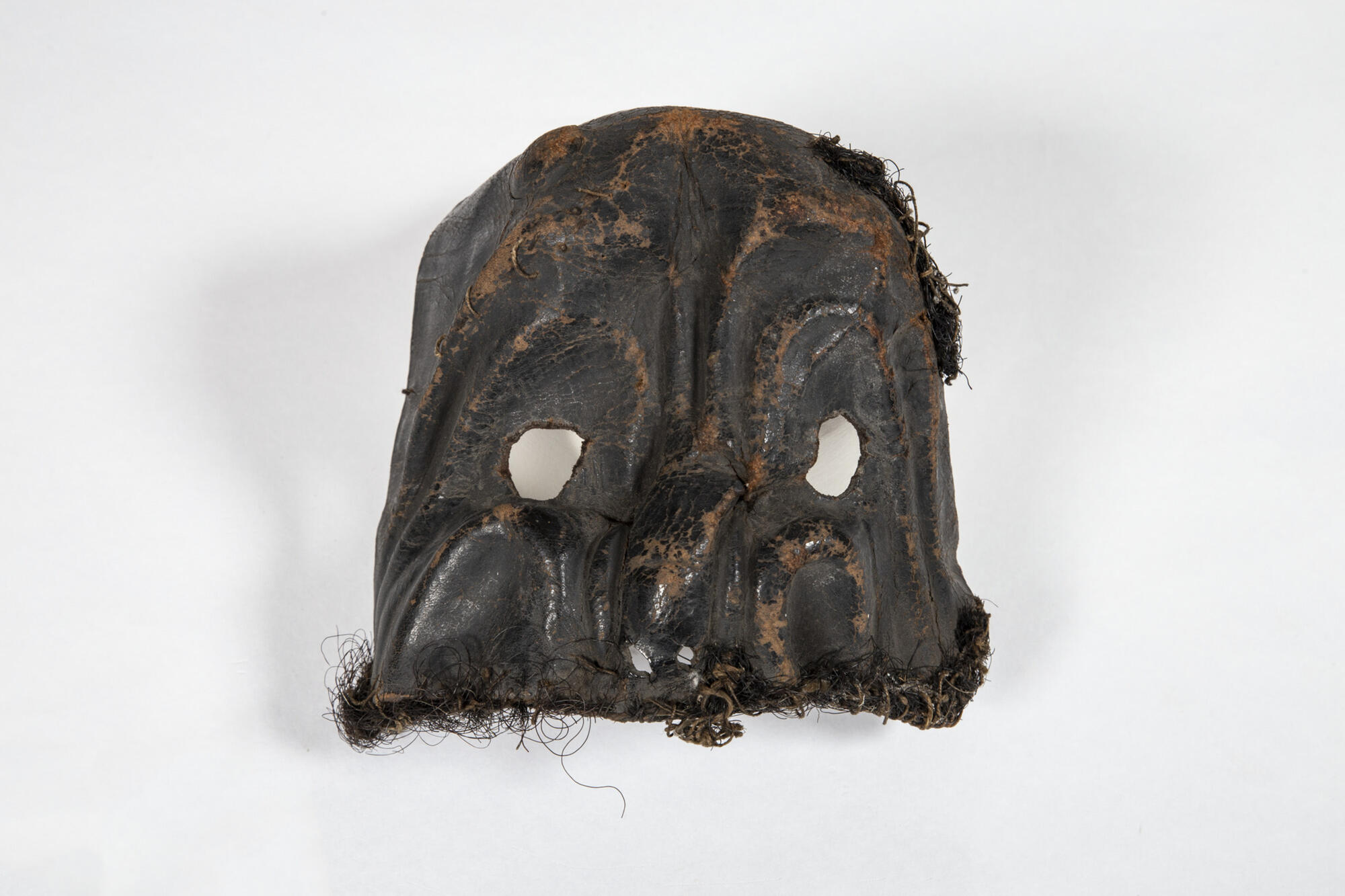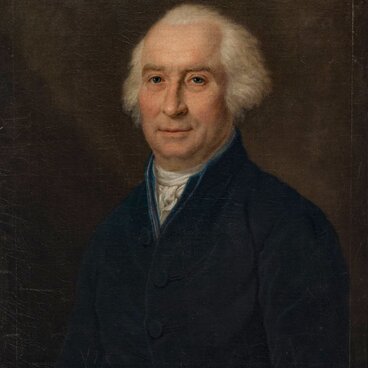The Museum of Theater and Music houses a leather mask of Zanni, a servant character from the commedia dell’arte. The commedia dell’arte is a type of Italian street theater where professional actors used improvisation and masks. It emerged in the mid-16th century and addressed people from every pocket of society, from peasants to royalty. The commedia dell’arte troupes traveled all around Italy and Europe. In the 18th century, the commedia dell’arte entertainers were invited to perform in Russia.
The commedia dell’arte became truly popular in Russia during the reign of Anna Ioannovna. The Italian shows were considered a pleasant pastime, and sometimes carnivals were held in Moscow and Saint Petersburg, where people wore amusing masks.A leather mask covering the face was an indispensable part of the costume of the commedia dell’arte actors. Over time, the names of the masks became the characters’ names. As a rule, one actor played one mask. A mask became a stock role that an actor chose at the beginning of the career and played for the rest of the life.
All mask characters were divided into two groups — comical and dramatic. The first one included Zanni (servants) masks. Zannis were the life and soul of the carnival, their intrigues and scheming helped develop the plot. At the commedia dell’arte shows, the audience roared with laughter at jokes and tricks of their favorite Zanni characters — Harlequin, Pierrot, Colombina and Smeraldina.
In the 19th century, the commedia dell’arte lost its popularity. However, its main concepts and traditions were adopted by Russian art. In the 20th century, the commedia dell’arte was used by Vsevolod Meyerhold and Yevgeny Vakhtangov as a basis for the so-called synthetic theater. From 1914 to 1916, the magazine called “The Love for Three Oranges” was issued in Petrograd. The name alluded to the eponymous fairy-tale play by Carlo Gozzi, who used the concepts of the commedia dell’arte in his works. The magazine focused on discussions about theater, art, literature and poetry.
The editor of the magazine Dr. Dapertutto was no other than Vsevolod Meyerhold, who adopted this pseudonym after the mischievous character from the tale by E. T. A. Hoffmann. The cover design was made by the artist Alexander Golovin who collaborated with Meyerhold for the plays staged at the Alexandrinsky and Mariinsky Theaters. The poetry section was edited by Alexander Blok.
The commedia dell’arte became truly popular in Russia during the reign of Anna Ioannovna. The Italian shows were considered a pleasant pastime, and sometimes carnivals were held in Moscow and Saint Petersburg, where people wore amusing masks.A leather mask covering the face was an indispensable part of the costume of the commedia dell’arte actors. Over time, the names of the masks became the characters’ names. As a rule, one actor played one mask. A mask became a stock role that an actor chose at the beginning of the career and played for the rest of the life.
All mask characters were divided into two groups — comical and dramatic. The first one included Zanni (servants) masks. Zannis were the life and soul of the carnival, their intrigues and scheming helped develop the plot. At the commedia dell’arte shows, the audience roared with laughter at jokes and tricks of their favorite Zanni characters — Harlequin, Pierrot, Colombina and Smeraldina.
In the 19th century, the commedia dell’arte lost its popularity. However, its main concepts and traditions were adopted by Russian art. In the 20th century, the commedia dell’arte was used by Vsevolod Meyerhold and Yevgeny Vakhtangov as a basis for the so-called synthetic theater. From 1914 to 1916, the magazine called “The Love for Three Oranges” was issued in Petrograd. The name alluded to the eponymous fairy-tale play by Carlo Gozzi, who used the concepts of the commedia dell’arte in his works. The magazine focused on discussions about theater, art, literature and poetry.
The editor of the magazine Dr. Dapertutto was no other than Vsevolod Meyerhold, who adopted this pseudonym after the mischievous character from the tale by E. T. A. Hoffmann. The cover design was made by the artist Alexander Golovin who collaborated with Meyerhold for the plays staged at the Alexandrinsky and Mariinsky Theaters. The poetry section was edited by Alexander Blok.






